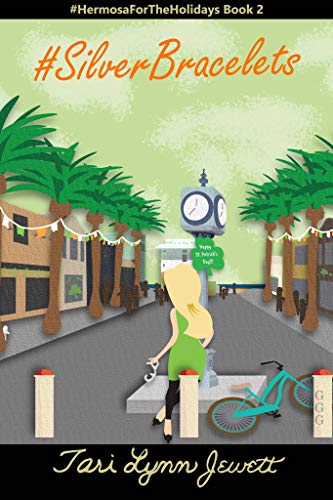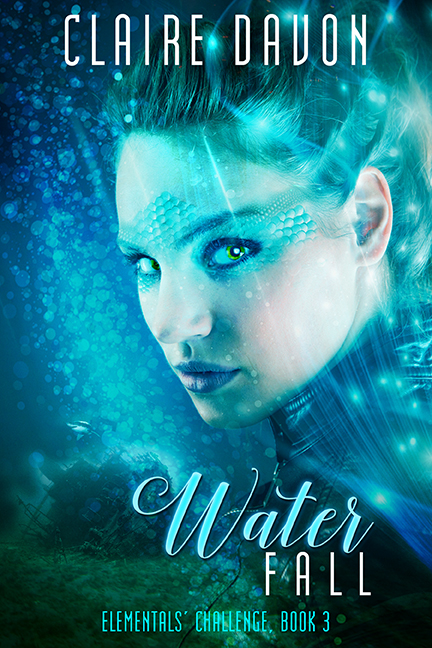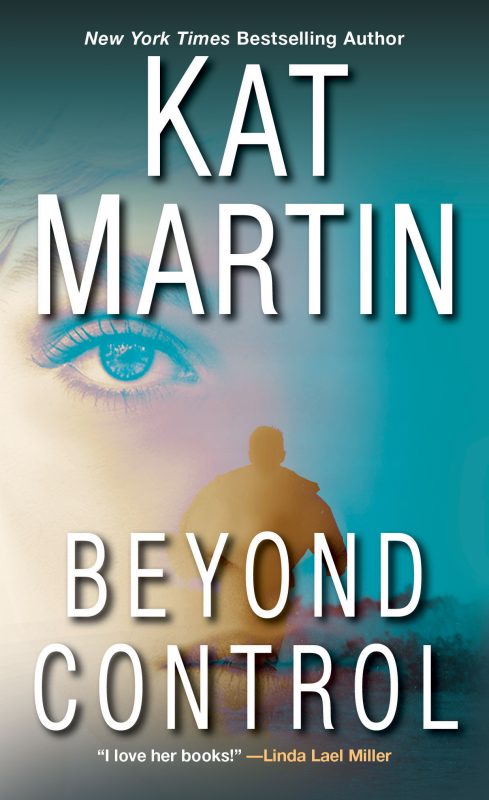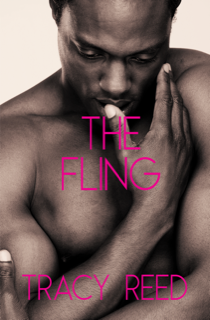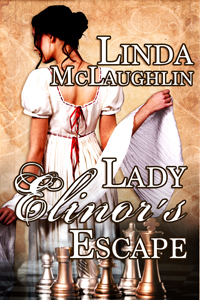Ask a Busy Person…from Isabel Swift
August 24, 2011 by Isabel Swift in category From Isabel Swift tagged as time managementYou know the aphorism: “if you want to get something done, ask a busy person.” ?
Well, I am here to say: “So True!”
and
“Let me explain!”
Because why is it true? Why is asking a not-busy person–a seemingly obvious choice–so challenging and problematic?
Well, let me walk you through it. Let’s just say you have nothing to do and someone (a spouse with a full time job, perhaps) approaches you with a task: a request to pick up some dry-cleaning. Because hey, you’re not doing anything, right?
“Honey, could you pick up the dry-cleaning? I have a million things I have to do & don’t have the time,” they’d ask.
What has just happened?
Well, your workload has just increased…one hundred percent (100%) !
You’re laughing, but that is exactly what it feels like.
Because what is not appreciated is that in addition to a massive workload increase, by taking on that task, numerous other tasks will have to join it. It can be overwhelming.
Because now you have to…
– get up, take off your pajamas, take a shower
– dry off, select and put on clothes, do makeup, brush hair
– find the laundry ticket, money, the dry cleaner’s address
– figure out how to get there: drive, walk, bus, etc., figure out when to leave
– research the route, or figure to park,
– mentally prepare yourself to encounter numerous strangers and unpredictable people, respond to questions
– gather articles, transact business, carry everything back & put everything away
It’s exhausting to think about.
Whereas if you had a hundred things to do, one more is only 1/100th. Often, that’s what it feels like.
And while everyone has an upper limit, usually one more thing is nothing. You’re already up, showered, shaved and out the door. Depending on location, there are a number of slots that picking up the dry cleaning would fit into–on the way to work, at lunch, on the way back; it’s just a brief detour, no trouble at all, really!
Somewhat frighteningly, often the less you do, the less you can do. And the more you do, the more you can do.
So lighten your load with care, or nothing will get done.
Isabel Swift
SEPTEMBER CONTEST DEADLINES
August 20, 2011 by Marianne H. Donley in category Archives tagged as Contests, deadlines, Donna CaubarreauxUpdated and all sites tested…Compiled by Donna Caubarreaux….May be forwarded with credits.
- EA = Electronic Format Available
- EA/Non US = Electronic for Foreign Entries
- EO = Electronic Only
- MO = Members Only
- U = Unpublished
- P = Published
- P/3 = Not published in three years
- Pnr = Published, but not by RWA standards
- PC = Not published in category selected
Valley of the Sun Romance Writers
Deadline: September 1, 2011
Enter: 3-5-page synopsis and up to 25 pages of story (30 pages max). Entry or synopsis may be shorter, but neither may be longer than specified.
Music City Romance Writers
Received by September 1, 2011
First twenty-five pages.
Maryland Romance Writers
Received by September 1, 2011
Up to 20 pages of any scene that showcases your use of sensual tension, plus an unjudged 1-page set-up (optional).
Oklahoma RWA
Deadline: September 2, 2011
First thirty pages.
Chick Lit Writers of the World
Received by midnight: September 6, 2011
No more than five thousand words.
Missouri RWA
Received by September 9, 2011
Writer must submit up to the first 7000 words (approx 25-28 pages) of manuscript.
RWA New York City
Midnight: September 12, 2011
Fifteen pages maximum, brief synopsis (two pages maximum, not judged)
- Check out Contests and Contest Winners on: http://contestdivas.blogspot.com/
- Check out the Award Winning Romance Books on: http://awardwinningromances.blogspot.com/
- Contest Alert-All the news on upcoming contests, plus Finalist & Winner listings, questions, etc. Sign up now! ContestAlert-subscribe@yahoogroups.com
- Announcement only list: ContestDeadlines-subscribe@yahoogroups.com
- For Published Authors ContestAlertPublished-subscribe@yahoogroups.com
- If you’re a Contest Judge, join ContestsJudges-subscribe@yahoogroups.com
Donna Caubarreaux is a member of Coeur de Louisiane, Scriptscene Chapter, NOLA Stars, Heart of Louisiana, and EPIC. She received a RWA Service Award in 1997
It’s a Story—It’s a File—It’s a BOOK
August 19, 2011 by Marianne H. Donley in category Archives tagged as Mona Karel, Monica Stoner, RitaMonica Stoner, Member at Large
My Killer, My Love was released in an e-book format on May 22, culminating decades of work and wishes. Even now, two whole long months later, writing those words give me a quick thrill of accomplishment. Then last week while I was immersed in hospital visits, long time commitments, and work, I received a proof hard copy of the book.
I have always maintained that a digital book is a book. Period. My Kindle is loaded with other writer’s stories and I have absolutely as much respect for their words on the screen as for their words on paper. Still I’m old enough and have been around books enough to feel an extra jolt of “wow†to hold my words bound together behind their beautiful cover.
All positive. And as I’m basking in the glow of loving my publisher, my cover, my characters who have become such an integral part of my life I suddenly realize: I can enter the RITA. Now how cool is THAT? Just to be sure, I pull up the RITA rules. Yep, we’re eligible, according to the RWA website:
“Eligible Novel†means a work of Romance Fiction of at least 40,000 words (as determined by computer word count) that is offered for sale in a readable or audio format to the general public by a publisher for which the author receives payment as stipulated in a written contract from a publisher, and for which the author does not participate in the costs of production in any manner, including but not limited to publisher assessment of a fee or other costs for editing, preparation, and/or distribution. A novel does not qualify if the publisher withholds or seeks full or partial payment or reimbursement of publication or distribution costs before paying royalties, including payment of paper, printing, binding, production, sales or marketing costs. The work must not be exclusively promoted and/or sold by the author or have distribution that is primarily directed toward sales to the author, his/her relatives and/or associates. The work must not be self-published.â€
Now, I understand rules and the necessity of having certain guidelines for a contest. But I have to admit to being just a bit confused about the ban on self published work. If we’re supposed to be judging the story as written, why the restriction on how the book is produced? Is there some fear a self published novel will be better than one produced by a major publisher? I can somewhat understand blocking the self published from membership in PRO or PAN status, but we’re talking here about a contest to choose the best romance books published during the previous year. Wouldn’t we want that to be the absolute best, no matter what the origin?
Taking this to a comparison with my “other lifeâ€â€”showing and judging purebred dogs—in theory shows are judged “blind.†In other words when you enter the show ring, the judge’s job is to evaluate the dog only. Not the owner or handler, not the pedigree, not the record. The dog. Being human, that doesn’t always happen, but the principle is why someone who works fifty hours a week to pay the bills and support their canine hobby, then cuts corners just to exhibit is willing to pit themselves against the deep pocket books of other breeders and owners. They know if their dog is a good example of the breed and is presented as well as the other dogs in the ring, they have at least a fighting chance to walk out of there with a win.
Do you feel restricting the contest to only those books from the “right†source is in the best interest of writing?
Monica Stoner writes as Mona Karel. Her first novel, MY KILLER MY LOVE was published in May by Black Opal Books and is currently available as an e-book.
Add Conflict to your Story with a Down & Dirty Fight
August 18, 2011 by A Slice of Orange in category Archives tagged as Jenny Hansen, More Cowbell, OCC/RWA, Technology Fun, writing, writing craftby Jenny Hansen
Today we’re going to talk about Dirty Fighting. What is it, and why do you want to do it?
To start at the beginning, last weekend my honey was cleaning the office and he came across a piece of paper that made us laugh our faces off. This four page document he found – called, “Dirty Fighting Techniques†– helped save our relationship back in 2006.
Note: Dirty Fighting isn’t about some how-to guide on Jujitsu or Street Fighting. Nope, it’s actually a list of twenty-two items given to us by our counselor to teach us the difference between the Dirty Fighting Techniques practiced by most people and the clean-as-a-whistle fighting he wanted us to strive for.
We’ve got to understand the goal before we can turn it upside down on its head, right?
What is clean fighting?
Clean Fighting follows these basic rules:
- Take responsibility for your own stuff. Also known as “cleaning up your own side of the street.†I know it sucks when you’re mad and you clean up your side while the other person leaves their big cow patties steaming, but lead by example on this one. It helps when someone steps up to be the bigger person.
- Leave the other person an “out with dignity.†This is most often achieved by understanding that there might be facts you don’t know.
- “I†statements are always going to work better when you’re pissed off than “you†statements. And don’t try to cheat with crap like, “I understand that you’re a selfish bastard.â€
- Talk about the behavior in those “I†statements, not any personality disorders you think they should address.
- Stick to the point. Resist throwing in the kitchen sink of laments spanning back over months of why they’re a (fill in the blank).
- Deliberately pushing buttons is REALLY dirty. The weak underbelly is to be avoided, even if you’re thinking your partner is lower than a yellow-bellied toad for siding with your mother-in-law over you.
Here is a clean fight summed up in 4 easy steps:
1. How you feel (use an “I†statement for this)
2. The behavior that prompted that feeling
3. Why it’s important/the background (i.e. what button did they push)
4. What would you want them to do differently next time
Sounds simple, doesn’t it? Go try it. It’s really hard to do when you’re mad. Most people who are angry fight dirty. Clean fighting takes some rigorous training.

Now let me ask you something. Do you really think your characters have had any of this sort of training? It’s pretty unlikely unless you’re writing about a psychologist. It’s much more likely that your character will be flawed like the rest of us.
What Makes Great Fiction?
- Great books are filled with conflict.
- And great characters (who learn important lessons).
- Great fiction rips emotion out of us readers.
- Oftentimes a great book will make you see yourself inside those pages.
Understanding the difference between clean and dirty fighting will give you a TON of mileage in your own stories. If you need plausible arguments and dialog, Dirty Fighting Techniques will help you achieve this. These techniques can be applied with a friend, family member or a significant other…it doesn’t really matter.
Every entry I’m sharing is guaranteed to make the other person see red. If you’re writing fiction, that anger and tension is a REALLY good thing. If I give you all twenty-two at once, it will be like taking a drink of water from a fire hydrant so we’re going to start with the five that will work best in fiction.
FIVE?? That’s all the Dirty Fighting I get off that list, you might ask… Yep. Five is all you get…until the next time we discuss the topic. I’m gonna make this a multi-part post so you have time to really roll around in the Dirty Fighting Swamp. Go ahead, get dirty. Be the bog.

As I said earlier, great books are filled with conflict. And great characters who learn important lessons. Plus, dialog is the number one way to do several fun things like move your story quickly and legally bring in backstory.
Note: For a rundown of the perils of Back Story, read Kristen Lamb’s Monday post.
- How To Write Dialogue: 6 Ways To Use it Effectively
- Dialogue Tags: How To Kill Off Some Of The Little Buggers by Sharla Rae
- He Said, She Said: Dialogue by Roni Loren
However, one of the problems I have with reading about dialog is that every character is unique and, even though the examples are usually awesome, my characters would never say those things. How do you think of creative things to say that would apply ONLY to our character?
One answer is to make him or her fight.
Since gratuitous fighting in a story is like gratuitous sex (kinda boring if there’s no real connection or reason for it), the author needs to find a great reason for the fight. How you use the fight is up to you but I think the easiest way to pave the road to this rad fight is to discover what your characters really want. Then dig down for what they really, really want. (You’ll remember this trick from Leanne Banks.)
DON’T give it to them. Or at least, don’t give it too soon.
Then flake away more layers to uncover what your character really fears. Then what they really, really fear. DO give that to them! This is where things get interesting. You not only have characters who are upset, you’ve also found a myriad of ways to slide everybody deeper into your story. To do this, ask your character questions.
Perhaps you’ll use the 9 questions I discussed a few weeks back in my post on Character Engagement or new ones that are all your own. Below are some of mine to help you get started.
1. What matters most to this character? (What is he or she most afraid to lose?)
2. Who matters most? (This is usually the person they are most afraid to lose.)
3. How did the character’s parents fight?
4. How did the character’s parents interact with him or her?
5. What does this character wish he or she had gotten in childhood?
6. What does my character want to be when they grow up
All of these questions can provide you with cues about where your character is “broken†and give you ideas about fixing the broken part (i.e. Fix = Lesson).
Now it’s time to unleash that fight! BRING. IT. ON!!

Below are my top five Dirty Fighting Techniques for adding tension and plotting options to your story. I’ll save the rest for a later post so you can really play with the first five. (Your sarcasm muscle – which is always used in a Dirty Dogfight – should get a quick flex before you begin.)
#1 – Triangulating: Don’t leave the issue between you and your conflict partner (could be a family member, friend or love interest), pull everybody in. Quote well-known authorities who agree with you and list every family member whom you know has taken your side (and lie about the ones you haven’t spoken to yet).
Uses: Triangulating is incredibly useful in fiction because you can expand the discussion to more characters and stir up some real drama. Let’s not keep this issue between just us, one character says to the other. Oh no, lets involve everybody.
If you have extreme Dirty Fighting Talent, you can stir the pot and then step back and play a new game called, “Let’s watch the other two people fight.†That’s good times.
#2 – Escalating: Quickly move from the main issue of the argument to questioning your partner’s basic personality, and then move on to wondering whether the relationship is even worth it. Blame your partner for having a flawed personality so that a happy relationship will be impossible.
Uses: Excellent tool for keeping two love interests apart. BUT, the fight better be about something that really, really matters or you risk falling into the Bog of Coincidence and most stories don’t have enough muscle to climb out of that place.
Escalating also allows for plausible use of Back Story. When you’re moving from the main
issue to the REAL issue (often happens at the black moment / end of Act 2), escalating the argument will make someone lose control enough that they blurt out something juicy. Way to go, Author!
#3 – Leaving: No problem is so big or important that it can’t be ignored or abandoned all together. Walk out of the room, leave the house, or just refuse to talk. Sometimes just threatening to leave can accomplish the same thing without all the inconvenience of following through.
Uses: My favorite use of this is employing it when the two characters really need each other. It completely ups the betrayal factor: I can’t depend on you, I don’t trust you, You’ve let me down.
You noticed how dirty that last statement was, right? Not a clean fight to be found anywhere with “leaving,” which is fantastic for your story! The farther your character falls, the harder the journey is on the way back up, right?
#4 – Timing: Look for a time when your partner is least able to respond or least expects an argument.
Uses: Think about this from a story point of view. A really great time to pick a fight is just before the main character embarks on a journey, has a new murder to solve, is called on to save the world. Anything with high stakes works great. Be sure the character ambushing them is a likeable one so the reader REALLY gets drawn into the conflict.
#5 – Rejecting Compromise: Never back down. Stick with the philosophy that only one of you can win.
Uses: This is a kickass Dirty Fighting trick to use on the main character. If there is only one winner, there is automatic conflict involved for the person who “loses.” The solutions are endless.
What do you think? What are some other ways you could use a good fight to help your
character grow or advance your story? Do you use any of the five techniques in your own life…come on, you can tell us! Let’s hear your fabulous Dirty (Fighting) Thoughts!
Jenny
Heck Yeah! Writing Together Can Be….Fun?
August 15, 2011 by Rebecca Forster in category The Write Life by Rebecca Forster tagged as A Writer's Life, brother, collaboration, friends, mother, sister, sonI went to a movie I had been excited to see and was sorely disappointed. The story was thin, the plot holes deep and characterization shallow. When I saw four writers credited for the script, I realized why the movie never gelled. Odd slices of brilliance had flashed and fizzled in a jumble of visions, styles and pressure to perform.
Which leads me to the question of the day: How do creative partnerships thrive and turn out one saleable, seamless product? To answer that question, I joined Scott Gordon, a superior court judge and author, who partnered with Alex Abella, a seasoned nonfiction writer, to publish Shadow Enemies: Hitler’s Secret Plot against the United States and Debra L. Martin who teams with her brother, David W. Small, on the Rule of Otharia fantasy books. Then I threw in my two cents because my son and I partnered on two book-to-screen adaptation projects.
 The plan: Does there have to be one?
The plan: Does there have to be one?
Rebecca: Our plan was to adapt my books for the screen.* The project turned out to be more intricate than I ever imagined. While the skeleton of the story was there, a screenplay was completely different from a novel format. I had to lean on Alex’s expertise but first I had to acknowledge that, in this arena, he knew better than I did. I wrote the first draft then we sat for hours at the kitchen table going over every line, stage direction and piece of dialogue until we got it right.
Scott: We started from a solid foundation of factual material and a subject that intrigued both of us. Alex and I shared research responsibilities. Once we had all the information we could gather, we locked ourselves in the law library (with gallons of Diet Coke) and came out only when we had a very detailed outline. Alex used his amazing narrative skills to describe how Hitler’s spies were recruited, trained and landed in full Nazi uniforms on our shores. Because of my legal background, I picked up the story as it traveled through the court system, the presidential politics and military tribunal. We definitely played to our strengths.
 Deb: Luckily, my brother and I share a love of the fantasy genre and specifically of psi powers (i.e. telepathy, etc.) so we had a focus. The planning process was extensive and time consuming. We had to share our individual visions for the book and combine them so that we could build the characters and the fictional society from the ground up. For us planning and immersing ourselves in all the details were critical before we ever began to write.
Deb: Luckily, my brother and I share a love of the fantasy genre and specifically of psi powers (i.e. telepathy, etc.) so we had a focus. The planning process was extensive and time consuming. We had to share our individual visions for the book and combine them so that we could build the characters and the fictional society from the ground up. For us planning and immersing ourselves in all the details were critical before we ever began to write.
Execution: Two people/one voice
Rebecca: Because we were working in visuals, voice wasn’t as big a factor as it would have been for a novel. This project was about pacing. Our age difference really got in the way, not our talents. When we were working on our romantic comedy my sensibilities were from the Carey Grant era and his were aligned with The Hangover. With our psychological thriller I had already created a wonderful villain in the book and plot points that I thought were chilling. Alex kicked them up ten notches so those same points became gruesome. I can honestly say, he made both projects thrilling while he acknowledged my expertise in characterization and plot trajectory.
Scott: Because we had divided the subject matter so specifically, we each wrote our sections. When it was time to edit, we were extremely diligent. Through that process, there seemed to come a melding of both our voices resulting in what you called a ‘seamless third voice’.
Deb: We thought we could each write a chapter and then put them together. That plan was a disaster. Our success as co-authors came after much practice and creating detailed outlines not just for the book, but for each chapter. Still, we weren’t rigid and were always open to a chapter that was enhanced beyond the outline. I also continually edited as we went along. Then we both do a full edit, let the project sit and edit once more before publication. That smoothed out snags.
Rough Patches: Keeping the relationship sane & productive
Rebecca: If a mother and son could get divorced, we would have been after the first project. I would get upset because the source material was mine and I thought it was perfect. Alex, also thought it was perfect – for a different time and audience. The second time we worked together we laid out ground rules for resolving disagreements: stop working, reference sections of the source material that bothered us and offer alternative language until we found common ground.
Scott: What? Authors can have creative differences? Seriously, rough patches are a given when you have two authors and one project. I think our disagreements helped the creative process. We had to pull back, think of the project and be frank and direct. The process of hashing out our differences in viewpoints and style made the book richer.
Deb: Dave lives in California and I live in Boston, so when we got together, we worked extremely hard during our in-person visits. But there was one 14-hour editing session that disintegrated into raised voices and ego kicking. Suddenly, we started to laugh and called it a night. The next morning we came to a great compromise for the scene. Now we realize that you have to leave your ego at the door and work for the good of the story.
So, if you’re still thinking about teaming up, go for it. Before you do, make sure you’re a good match. Be civil, be honest, be clear about the purpose of the project, iron out the combined vision and recognize each other’s strengths and weaknesses. If you need a little inspiration pick up Shadow Enemies or Quest for Nobility in the Rule of Otharia series and see how two teams of pros turned out their impeccable books. And when my script becomes a movie, you’re all invited to join me and my partner for the premier – we’ll buy the popcorn.
*One script is in development, one is with producers and new books are always in the pipeline.
Affiliate Links
A Slice of Orange is an affiliate with some of the booksellers listed on this website, including Barnes & Nobel, Books A Million, iBooks, Kobo, and Smashwords. This means A Slice of Orange may earn a small advertising fee from sales made through the links used on this website. There are reminders of these affiliate links on the pages for individual books.
Search A Slice of Orange
Find a Column
Archives
Featured Books
BEYOND CONTROL
Present Danger—When Victoria Bradford got engaged, she told herself to give love a chance. Six months later, she's on the run from her angry, abusive ex-fiancé with her four-year-old daughter and nowhere to go.
More info →THE FLING
Every woman is beautiful. Sometimes it just takes the right man to show you just how beautiful you are.
More info →LADY ELINOR’S ESCAPE
Lady Elinor Ashworth always longed for adventure, but ...
More info →Newsletter
Contributing Authors
Search A Slice of Orange
Find a Column
Archives
Authors in the Bookstore
- A. E. Decker
- A. J. Scudiere
- A.J. Sidransky
- Abby Collette
- Alanna Lucus
- Albert Marrin
- Alice Duncan
- Alina K. Field
- Alison Green Myers
- Andi Lawrencovna
- Andrew C Raiford
- Angela Pryce
- Aviva Vaughn
- Barbara Ankrum
- Bethlehem Writers Group, LLC
- Carol L. Wright
- Celeste Barclay
- Christina Alexandra
- Christopher D. Ochs
- Claire Davon
- Claire Naden
- Courtnee Turner Hoyle
- Courtney Annicchiarico
- D. Lieber
- Daniel V. Meier Jr.
- Debra Dixon
- Debra H. Goldstein
- Debra Holland
- Dee Ann Palmer
- Denise M. Colby
- Diane Benefiel
- Diane Sismour
- Dianna Sinovic
- DT Krippene
- E.B. Dawson
- Emilie Dallaire
- Emily Brightwell
- Emily PW Murphy
- Fae Rowen
- Faith L. Justice
- Frances Amati
- Geralyn Corcillo
- Glynnis Campbell
- Greg Jolley
- H. O. Charles
- Jaclyn Roché
- Jacqueline Diamond
- Janet Lynn and Will Zeilinger
- Jeff Baird
- Jenna Barwin
- Jenne Kern
- Jennifer D. Bokal
- Jennifer Lyon
- Jerome W. McFadden
- Jill Piscitello
- Jina Bacarr
- Jo A. Hiestand
- Jodi Bogert
- Jolina Petersheim
- Jonathan Maberry
- Joy Allyson
- Judy Duarte
- Justin Murphy
- Justine Davis
- Kat Martin
- Kidd Wadsworth
- Kitty Bucholtz
- Kristy Tate
- Larry Deibert
- Larry Hamilton
- Laura Drake
- Laurie Stevens
- Leslie Knowles
- Li-Ying Lundquist
- Linda Carroll-Bradd
- Linda Lappin
- Linda McLaughlin
- Linda O. Johnston
- Lisa Preston
- Lolo Paige
- Loran Holt
- Lyssa Kay Adams
- Madeline Ash
- Margarita Engle
- Marguerite Quantaine
- Marianne H. Donley
- Mary Castillo
- Maureen Klovers
- Megan Haskell
- Melanie Waterbury
- Melisa Rivero
- Melissa Chambers
- Melodie Winawer
- Meriam Wilhelm
- Mikel J. Wilson
- Mindy Neff
- Monica McCabe
- Nancy Brashear
- Neetu Malik
- Nikki Prince
- Once Upon Anthologies
- Paula Gail Benson
- Penny Reid
- Peter Barbour
- Priscilla Oliveras
- R. H. Kohno
- Rachel Hailey
- Ralph Hieb
- Ramcy Diek
- Ransom Stephens
- Rebecca Forster
- Renae Wrich
- Roxy Matthews
- Ryder Hunte Clancy
- Sally Paradysz
- Sheila Colón-Bagley
- Simone de Muñoz
- Sophie Barnes
- Susan Squires
- T. D. Fox
- Tara C. Allred
- Tara Lain
- Tari Lynn Jewett
- Terri Osburn
- Tracy Reed
- Vera Jane Cook
- Vicki Crum
- Writing Something Romantic
Affiliate Links
A Slice of Orange is an affiliate with some of the booksellers listed on this website, including Barnes & Nobel, Books A Million, iBooks, Kobo, and Smashwords. This means A Slice of Orange may earn a small advertising fee from sales made through the links used on this website. There are reminders of these affiliate links on the pages for individual books.





